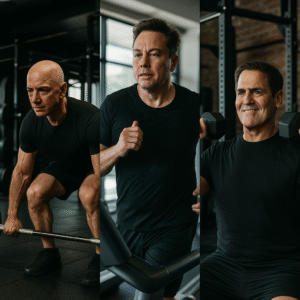In today’s fast-paced world, where stress and distractions seem to be constant companions, finding moments of tranquility and focus can be challenging. However, amidst the chaos, there exists a powerful tool that not only enhances physical well-being but also nurtures mental clarity and emotional balance: mindfulness. In this blog post, we delve into the fascinating synergy between mindfulness and fitness teaching, exploring how integrating mindfulness practices into exercise routines can revolutionize the way we approach physical activity. From yoga to HIIT workouts, mindfulness techniques can be seamlessly woven into various fitness modalities, transforming each session into a holistic experience that nourishes both body and mind. Whether you’re a seasoned fitness instructor or a novice enthusiast, embracing mindfulness principles can deepen your connection to your practice, enhance performance, and cultivate a profound sense of presence. Join us as we uncover the transformative potential of incorporating mindfulness into fitness teaching, unlocking a path towards greater well-being and fulfillment.
Mindfulness During Strength Training
In the fast-paced world of strength training, it’s easy to get caught up in the repetition of movements and the desire to push our bodies to the limit. However, integrating mindfulness into our strength training routines can offer a wealth of benefits, both physically and mentally. By bringing awareness to our bodies, breath, and thoughts during each lift, we can enhance our performance, reduce the risk of injury, and cultivate a deeper connection between mind and muscle.
 The Power of Presence
The Power of Presence
Mindfulness during strength training starts with being fully present in the moment. Instead of letting our minds wander or focusing solely on the end goal, we can bring our attention to the sensations in our bodies as we lift. Notice the feeling of muscles engaging, the rhythm of your breath, and the alignment of your posture. By anchoring our awareness in the present moment, we can optimize our movements and minimize distractions.
Tuning into Technique
Mindful strength training involves paying close attention to our technique with each repetition. Rather than rushing through sets to reach a certain number, take the time to perform each movement with precision and control. Focus on proper form, engaging the correct muscles, and moving through the full range of motion. By honing in on technique, we not only maximize the effectiveness of our workouts but also reduce the risk of injury.
Breath Awareness
Our breath serves as a powerful anchor for mindfulness during strength training. Pay attention to the rhythm of your breath as you lift weights or perform bodyweight exercises. Inhale deeply as you prepare for a movement, and exhale as you exert effort. By syncing your breath with your movements, you can enhance your focus, regulate your energy, and promote relaxation during challenging lifts.
Embracing Effort and Rest
Mindfulness invites us to embrace both effort and rest in our strength training practice. Recognize the sensations of exertion as you push your limits and challenge yourself with heavier weights or more intense exercises. At the same time, honor the importance of rest and recovery by listening to your body’s signals and taking breaks when needed. By finding balance between effort and rest, you can sustain your progress and prevent burnout.
Cultivating Body Awareness
Mindful strength training offers an opportunity to cultivate a deeper awareness of our bodies and their capabilities. Take time to explore how different movements feel, where you feel tension or discomfort, and how adjustments in posture or technique can affect your experience. By tuning into these subtle cues, you can fine-tune your workouts to better suit your body’s needs and prevent imbalances or overuse injuries.
The Benefits of Mindful Movement
Mindful movement, characterized by a deliberate focus on the present moment and a heightened awareness of body sensations, offers a plethora of benefits for both physical and mental well-being. In today’s fast-paced world, incorporating mindfulness into our movement practices can help us cultivate greater presence, resilience, and vitality. Let’s explore some of the key benefits of embracing mindful movement in our daily lives.
- Improved Body Awareness: Mindful movement encourages us to tune into the sensations of our bodies, fostering a deeper awareness of posture, alignment, and movement patterns. This heightened body awareness can help prevent injuries, improve movement efficiency, and enhance overall physical performance.
- Reduced Stress and Anxiety: Engaging in mindful movement practices such as yoga, tai chi, or mindful walking can help alleviate stress and anxiety by promoting relaxation and grounding us in the present moment. By focusing on the sensations of movement and breath, we can quiet the mind and cultivate a sense of calmness and clarity.
- Enhanced Mind-Body Connection: Mindful movement fosters a deeper connection between the mind and body, allowing us to fully inhabit and experience each moment of movement. By syncing our breath with our movements and paying attention to bodily sensations, we can cultivate a sense of unity and integration between body and mind.
- Increased Flexibility and Range of Motion: Regular practice of mindful movement can improve flexibility, mobility, and range of motion in the body. By moving mindfully and with intention, we can gently stretch and lengthen muscles, release tension, and improve joint function, leading to greater ease of movement and reduced risk of injury.
Incorporating mindful movement into our daily lives can yield a wide range of benefits for our physical, mental, and emotional health.
The Role of Breath in Mindful Fitness
Breath is the essence of life, and its role in mindful fitness practices cannot be overstated. Whether you’re flowing through yoga poses, powering through a cardio workout, or lifting weights in the gym, conscious breathing can profoundly impact your physical performance, mental focus, and overall well-being. In this exploration of the role of breath in mindful fitness, we’ll delve into the ways in which harnessing the power of breath can enhance your workouts and deepen your mind-body connection.
Foundation of Presence
Conscious breathing serves as the cornerstone of mindfulness in fitness, anchoring us firmly in the present moment. By directing our attention to the rhythm of our breath, we draw our awareness away from distractions and into the sensations of the body as it moves and engages in physical activity. Each inhale and exhale becomes a reminder to stay present and fully engaged in the workout experience.
Oxygenation and Energy
The breath is our primary source of oxygen, fueling our muscles and energizing our bodies during exercise. Mindful breathing techniques, such as deep diaphragmatic breathing or rhythmic breathing patterns, can optimize oxygen intake and delivery to the muscles, enhancing endurance and performance. By consciously regulating our breath, we can sustain our energy levels throughout the workout and push through challenging moments with greater ease.
Stress Reduction and Relaxation
In addition to fueling physical exertion, mindful breathing can also serve as a powerful tool for stress reduction and relaxation. Deep, slow breaths activate the parasympathetic nervous system, triggering the body’s relaxation response and helping to counteract the effects of stress hormones like cortisol. Incorporating moments of intentional breathing into your fitness routine can promote a sense of calm and ease, allowing you to approach your workouts with a clear and focused mind.
Enhancing Mind-Body Connection
Conscious breathing deepens the connection between the mind and body, fostering greater awareness of the physical sensations and subtle nuances of movement during exercise. By syncing your breath with your movements – inhaling to prepare for a pose or lift, and exhaling to exert effort – you can cultivate a sense of unity between your breath and your actions. This heightened mind-body connection not only improves movement efficiency but also enhances proprioception and body awareness.
Managing Intensity and Effort
Mindful breathing techniques offer a powerful means of managing intensity and effort levels during exercise. By paying attention to the quality and pace of your breath, you can gauge your exertion level and adjust accordingly. Shallow, rapid breathing may indicate that you’re pushing too hard and need to dial back the intensity, while slow, deep breaths can help you sustain effort during prolonged or challenging workouts. Learning to listen to your breath can empower you to find the optimal balance between pushing your limits and respecting your body’s needs.
Conclusion
Results Transformation Center, we recognize the profound impact of integrating mindfulness practices into fitness teaching. Through our commitment to incorporating mindfulness techniques, such as breath awareness and present moment focus, we empower individuals to cultivate a deeper connection between mind and body during their fitness journey. By fostering this holistic approach, we aim to not only enhance physical well-being but also promote mental clarity and emotional balance. With our dedicated focus on mindfulness, we strive to support our clients in achieving transformative results, both inside and outside the gym.








